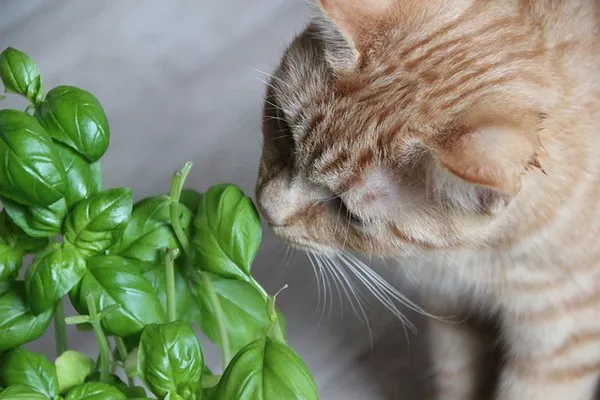Succulents have become increasingly popular among plant enthusiasts due to their low maintenance and unique aesthetic appeal. However, while these plants are prized for their resilience and beauty, some succulents can pose a threat to our beloved feline companions. Cats are notorious for their curious nature and tendency to nibble on plants, making it crucial for pet owners to be aware of which succulents are toxic to their furry friends.
Understanding Toxicity in Succulents
Toxicity in succulents can vary widely depending on the species and the specific toxins they contain. While some succulents may only cause mild gastrointestinal upset, others can lead to more severe symptoms and even be fatal if ingested in large quantities.
One of the primary concerns with toxic succulents is the presence of compounds such as alkaloids, glycosides, and saponins, which can be harmful to both humans and animals. These substances may cause symptoms ranging from vomiting and diarrhea to lethargy, difficulty breathing, and organ failure in severe cases.
Common Toxic Succulents
Several popular succulent species are known to be toxic to cats and should be kept out of reach to prevent accidental ingestion. Among the most commonly encountered toxic succulents are:
1. Aloe Vera (Aloe barbadensis): While prized for its medicinal properties in humans, aloe vera contains saponins that can cause gastrointestinal upset, vomiting, and diarrhea in cats.
2. Jade Plant (Crassula ovata): Also known as the money plant or lucky plant, jade plant contains bufadienolides, which can cause vomiting, lethargy, and incoordination if ingested by cats.
3. Kalanchoe (Kalanchoe spp.): This popular flowering succulent contains cardiac glycosides, which can disrupt heart function and lead to symptoms such as vomiting, diarrhea, and abnormal heart rhythms in cats.
4. Euphorbia (Euphorbia spp.): Euphorbias, including varieties such as crown of thorns (Euphorbia milii) and pencil cactus (Euphorbia tirucalli), contain a milky sap that is highly irritating and toxic if ingested. Symptoms may include drooling, vomiting, and oral irritation.
5. Snake Plant (Sansevieria trifasciata): While considered mildly toxic to cats, snake plants contain saponins that can cause gastrointestinal discomfort and occasional vomiting if ingested.
6. Christmas Cactus (Schlumbergera spp.): Despite its festive name, the Christmas cactus can cause gastrointestinal upset in cats due to its mildly toxic properties.
7. Echeveria (Echeveria spp.): Although generally considered less toxic than some other succulents, ingestion of echeveria can still result in mild gastrointestinal symptoms in cats.
Preventing Accidental Ingestion
To safeguard your feline friends from the potential dangers of toxic succulents, consider the following precautions:
1. Research Before You Buy: Before adding any new succulents to your collection, research their toxicity levels to ensure they are safe to have around pets.
2. Keep Plants Out of Reach: Place toxic succulents in areas that are inaccessible to cats, such as high shelves or hanging planters.
3. Monitor Your Cat’s Behavior: Keep an eye on your cat’s behavior around plants and intervene if you notice any attempts to nibble or play with potentially toxic succulents.
4. Provide Safe Alternatives: Offer your cat non-toxic plants, such as cat grass or catnip, to satisfy their natural urge to chew on foliage.
5. Educate Yourself and Others: Share information about toxic succulents with fellow pet owners to raise awareness and prevent accidental poisonings.
What to Do If Ingestion Occurs
Despite your best efforts, accidents can still happen. If you suspect that your cat has ingested a toxic succulent, it’s essential to act quickly:
1. Identify the Plant: If possible, identify the plant your cat has ingested to help determine the appropriate course of action.
2. Contact Your Veterinarian: Immediately contact your veterinarian or an emergency animal clinic for guidance. Provide as much information as possible about the plant and your cat’s symptoms.
3. Follow Treatment Recommendations: Follow your veterinarian’s recommendations for treatment, which may include inducing vomiting, administering activated charcoal, or providing supportive care to manage symptoms.
4. Monitor Your Cat’s Condition: Keep a close eye on your cat’s condition and follow up with your veterinarian as directed to ensure a full recovery.
Conclusion
While succulents can add beauty and charm to our homes, it’s essential to be mindful of the potential risks they pose to our feline companions. By familiarizing yourself with common toxic succulents and taking proactive measures to prevent accidental ingestion, you can create a safe environment where both plants and pets can thrive. Remember, when it comes to your cat’s health and well-being, knowledge and prevention are key.


